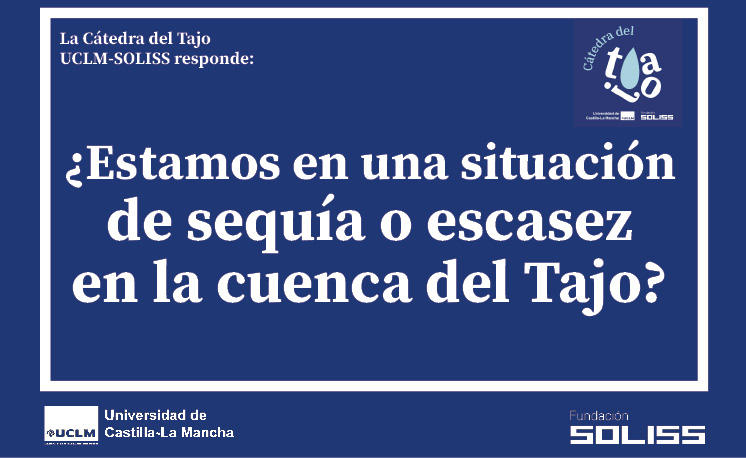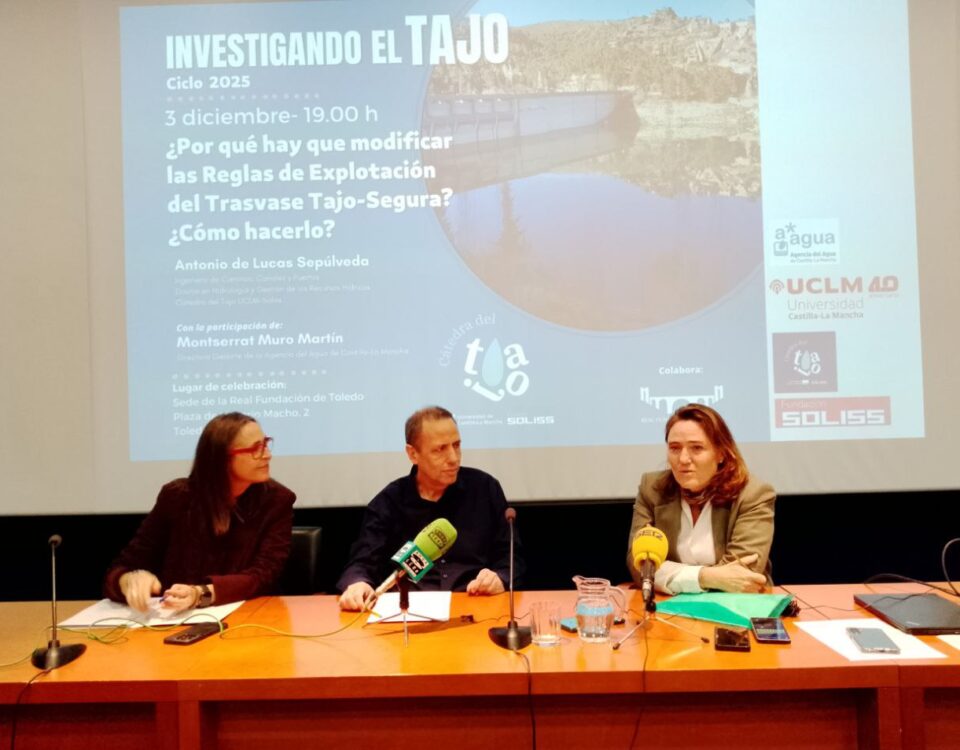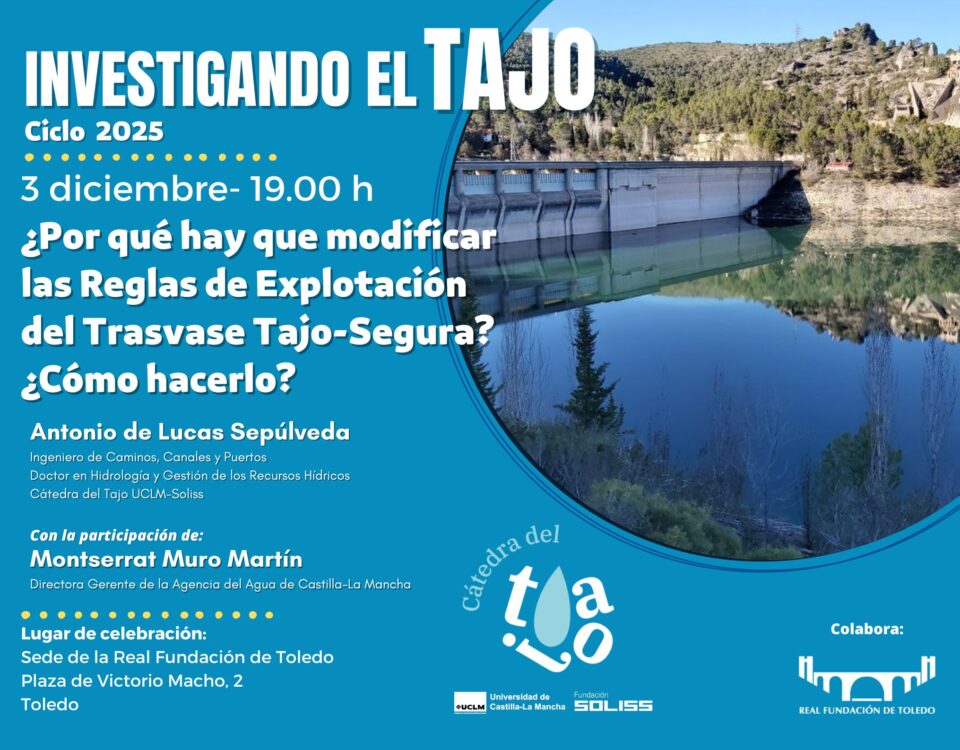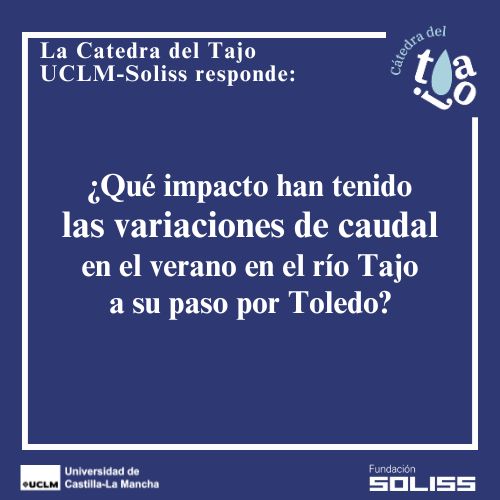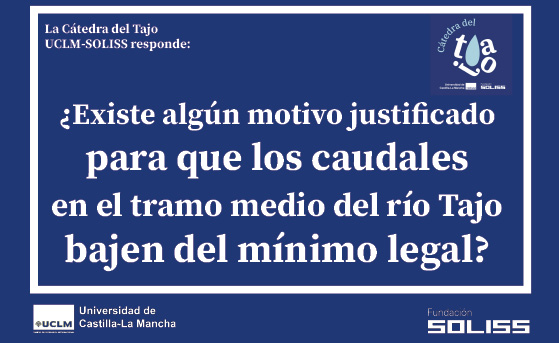
The UCLM-Soliss Tagus Chair Responds: Is there any justified reason for the flows in the middle section of the Tagus River to fall below the legal minimum?
29/06/2022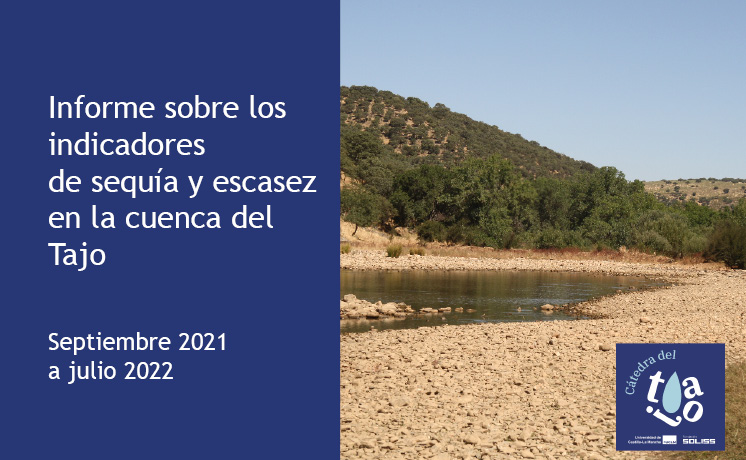
Report on drought and scarcity indicators (September 2021-July 2022)
08/09/2022- The Tagus basin is in a normal situation with regard to the rainfall received throughout the hydrological year, despite the fact that the summer has been very dry.
- In global terms, it is not in a shortage situation either, so all the demands of the Tagus basin can be satisfied normally.
- The Tajo Chair considers that the demands of the basin must be adapted to the available resources to face these dry periods, especially in the context of current climate change.
The absence of precipitation during the summer, together with heat waves, has widespread the perception that we are immersed in a situation of drought and lack of water. From the UCLM-Soliss Tagus Chair we analyze the existing data on rainfall and water reserves to know if we are really going through a dry period and if, in that case, measures should be established by public administrations.
Dry summer, yes, but no drought yet
According to water legislation, "drought" must be understood as an "unpredictable natural phenomenon that occurs mainly due to a lack of precipitation that gives rise to a significant temporary decrease in available water resources." It must be taken into account that, in the general Mediterranean climate of the Tagus basin, the alternation of wet periods with drier ones is normal, so droughts would be normal natural episodes. Furthermore, the annual summer period is characterized by having several hot and dry months. Therefore, dryness is a common phenomenon that conditions the available water resources, so this situation must be taken into account in the management of water.
To manage prolonged episodes of drought and the decrease in water reserves, the demarcations prepare their respective Special Drought Plans (PES). In the PES, the concept of “prolonged drought” appears, which is understood as a natural, persistent and intense situation of decreased precipitation produced by infrequent circumstances and reflected in water contributions. This concept refers to a prolonged and pronounced drought that occurs in circumstances other than normal.
The first thing we need to know is if there has been a decrease in precipitation. In the table prepared with data from the State Meteorological Agency (AEMET), we can see that the hydrological year (measured since autumn) has been very irregular. The winter has been much drier than normal (November, January and February are classified as very dry), followed by some very wet March and April, with the month of May being extremely dry and the summer months as a situation unusual dryness. The annual balance tells us that 20% less accumulated rainfall has been recorded compared to the average for the period 1981-2010.
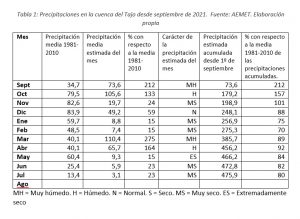
Desde el Ministerio para la Transición Ecológica y Reto Demográfico se utiliza el Índice Estandarizado de Precipitaciones (SPI) que muestra si nos encontramos en una situación húmeda, normal o seca. Los valores positivos del SPI indican una precipitación superior a la media y los valores negativos del mismo, una precipitación inferior a la media; los valores del índice comprendidos entre -1 y +1 caracterizan un período como «normal». Actualmente the July SPI for the Tagus basin (latest data available) it is located between 0 and -1.
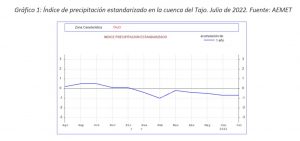
In short, there has not been a significant decrease in annual rainfall in the basin. These have been slightly reduced, but within normality.
Regarding the drought indicators managed by the Tagus Hydrographic Confederation (AEMET's rain gauge network and its own hydrological control network), the situation would be normal throughout the hydrographic basin. We cannot, therefore, say that we are (currently) in a situation of prolonged drought in any territorial unit of the Tagus basin.
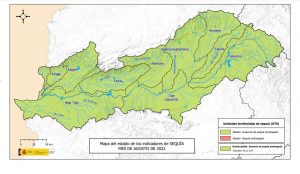
We are not in a shortage situation either.
A concept that is often confused with drought is scarcity. This refers to a problem in meeting demands. That is, there are not enough resources in a given territory to satisfy the uses of water, for whatever reasons. Short-term shortages are temporary in nature and may have their origin in drought situations (whether ordinary or exceptional) or due to other issues related to management or temporary overexploitation of the resource. Structural scarcity refers to permanent problems in meeting demands, due to overexploitation, regardless of whether we are in a dry or wet period.
According to shortage indicators, the global situation in the basin is normal. However, the Alagón Irrigation system is in a pre-alert situation, which could give rise to savings, control and monitoring measures, but not to management measures that would imply a restriction on uses. The most worrying situation is in the Bajo Tagus system, which has just entered a state of alert (according to advance data for the month of August), although with the current reserves the demands are not compromised, including the flows established in the Convention of Albufeira to the Tagus River in Portugal. This system is sized to serve hydroelectric uses so, even on alert, the rest of the uses are guaranteed.In short, it cannot be said in general terms that there is a shortage situation in the Tagus basin. Furthermore, water for human supply accounts for 20% of the total water available and in the order of priorities for water uses it occupies first place. Therefore, we are not currently facing a situation of restrictive measures on domestic consumption.
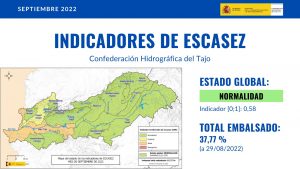
It is better prevent…
However, in case the generalized lack of rainfall that we have suffered since May in the Tagus basin persists, it is important that adequate means be put in place in time to adapt uses to a possible dry period. And in the medium and long term, the demands of the basin must be adapted to the available resources in the context of current climate change, in which the current average precipitation in the basin It is 12% lower than the average for the period 1940-1980.
